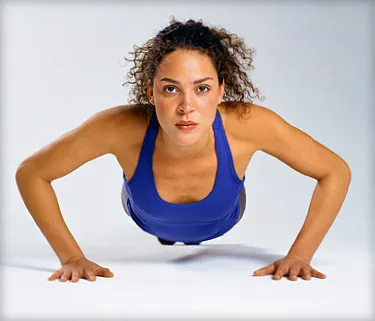By Michael Esco, PhD, HFS, CSCS*D
WebMD Expert ReviewPreparing the body “not only for the known, but also the unknown” is the mantra for CrossFit, one of the fastest growing strength and conditioning programs today. It is not a traditional, specialized training program like doing isolated weight lifting for a certain muscle or aerobics.
“Our specialty is not specializing," says CrossFit founder and former gymnast Greg Glassman.
It's also a very tough workout -- not one to take lightly, especially if you're not active right now.
Here's what you should know before you get started.
What is CrossFit?
CrossFit combines strength training, explosive plyometrics, speed training, Olympic- and power-style weight lifting, kettle bells, body weight exercises, gymnastics, and endurance exercise.
By doing this, CrossFit targets what it calls the major components of physical fitness: cardiorespiratory fitness, stamina, muscular strength and endurance, flexibility, power, speed, agility, balance, coordination, and accuracy.
Training the CrossFit way requires you to work out 3 to 5 days per week. The workouts are highly intense and short, taking about 5 to 15 minutes to complete.
CrossFit workouts typically combine explosive exercises done in a circuit format: One exercise follows right after the next, with very little rest in between.
The main CrossFit exercises involve the whole body and include pushing, pulling, running, rowing, and squatting.
There are hundreds of CrossFit exercises. Here are a few examples:
- Power Cleans: Pulling a weighted bar from the floor and bringing it up to and in front of your shoulders in a quick and forceful manner.
- Burpees: This is a body-weight-only exercise that involves beginning in a standing position, quickly dropping to the floor and doing a push-up, then coming up to a squatting position and explosively jumping straight-up.
- The Snatch: A weighted bar is rapidly pulled from the floor to directly over your head with the arms held straight.
- Thruster: This exercise begins with standing upright with weighted bar held in front of your shoulders. You squat down to the point where your thighs are parallel to the floor, then quickly standing back-up and pressing the weighted bar over your head.
Other examples are variations of push-ups, sit-ups, and pull-ups. CrossFit also often uses kettle bells (a weighted bell with a handle on top), medicine balls, climbing ropes, jump ropes, and rowing machines.
The CrossFit WOD
CrossFit posts a Workout of the Day (WOD) on its web site. Some of the WOD are specially named after women or military heroes. The WOD changes each day and there are a lot of them. And they can be quite demanding.
- The Barbara involves five circuits of 20 pull-ups, 30 push-ups, 40 sit-ups, and 50 body weight-only squats performed in order, while only resting at the end of each circuit for a 3-minute period.
- The Angie - 100 pull-ups, 100 push-ups, 100 sit-ups, 100 bodyweight-only squats to be accumulated (not performed in a row, unless you are fit enough) during the entire workout.
- The Murph - a timed 1-mile run, followed by 100 pull-ups, 200 push-ups, 300 body weight squats, finished off by another 1-mile run.
- The Jackie - 1,000 meter row, 50 thrusters with a selected weight, and 30 pull-ups: preferably performed without any rest between each exercise.

No comments:
Post a Comment